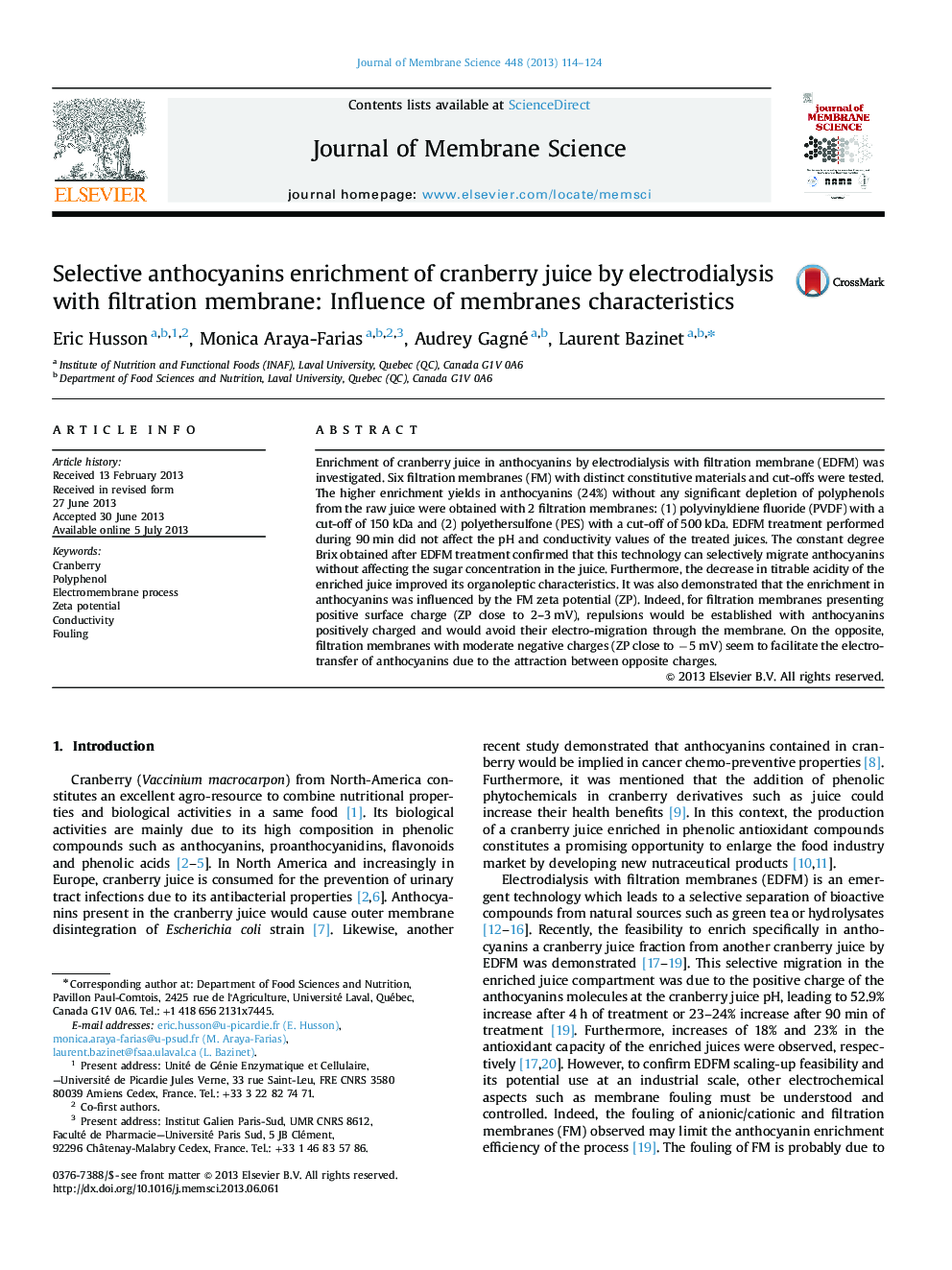| Article ID | Journal | Published Year | Pages | File Type |
|---|---|---|---|---|
| 634124 | Journal of Membrane Science | 2013 | 11 Pages |
•Test of six filtration membranes for enrichment of juice in anthocyanins by EDFM.•Higher enrichment yields in anthocyanins obtained with PVDF—150 kDa and PES—500 kDa.•Enrichment in anthocyanins was influenced by the filtration membrane zeta potential.•Negatively charged membranes facilitate the electro-transfer of anthocyanins.
Enrichment of cranberry juice in anthocyanins by electrodialysis with filtration membrane (EDFM) was investigated. Six filtration membranes (FM) with distinct constitutive materials and cut-offs were tested. The higher enrichment yields in anthocyanins (24%) without any significant depletion of polyphenols from the raw juice were obtained with 2 filtration membranes: (1) polyvinyldiene fluoride (PVDF) with a cut-off of 150 kDa and (2) polyethersulfone (PES) with a cut-off of 500 kDa. EDFM treatment performed during 90 min did not affect the pH and conductivity values of the treated juices. The constant degree Brix obtained after EDFM treatment confirmed that this technology can selectively migrate anthocyanins without affecting the sugar concentration in the juice. Furthermore, the decrease in titrable acidity of the enriched juice improved its organoleptic characteristics. It was also demonstrated that the enrichment in anthocyanins was influenced by the FM zeta potential (ZP). Indeed, for filtration membranes presenting positive surface charge (ZP close to 2–3 mV), repulsions would be established with anthocyanins positively charged and would avoid their electro-migration through the membrane. On the opposite, filtration membranes with moderate negative charges (ZP close to −5 mV) seem to facilitate the electro-transfer of anthocyanins due to the attraction between opposite charges.
